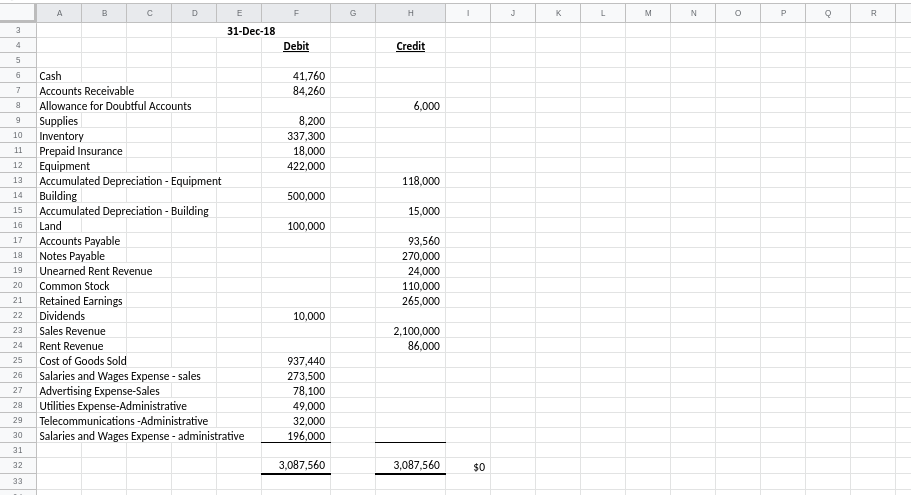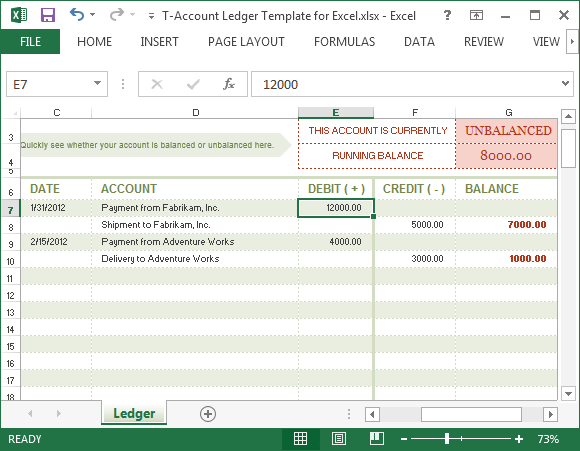

Information about creating and modifying checklists for General Ledger routines for the end of a month, quarter, or year also are included. Part 6, Utilities and routines, provides the procedures that you need to maintain your data in General Ledger.
#HOW TO DO A LEDGER T ACCOUNT HOW TO#
Part 5, Reports, describes how to use reports to analyze transaction and account information, and how to display the information on a computer screen or on a printed report, or to save it to a file. Part 4, Inquiries, shows how to view both current and historical account, budget, and transaction information. Part 3, Transactions, provides procedures for completing General Ledger accounting tasks.

Part 2, Budgets, describes how to create a new budget in Microsoft Dynamics GP or in Microsoft Excel. Part 1, Setup, describes how to set up General Ledger so that it meets the needs of your business and works with other modules that you use.
#HOW TO DO A LEDGER T ACCOUNT MANUAL#
The manual is divided into the following parts: To view information about the release of Microsoft Dynamics GP that you’re using and which modules or features you are registered to use, choose Help > About Microsoft Dynamics GP. Some features described in the documentation are optional and can be purchased through your Microsoft partner. To make best use of General Ledger, you should be familiar with system-wide features described in the System User’s Guide, the System Setup Guide, and the System Administrator’s Guide. This manual is designed to give you an understanding of how to use the features of General Ledger, and how it integrates with the Microsoft Dynamics GP system. For more information, see the Analytical Accounting documentation. If you are using Analytical Accounting, you can set up dimension codes and account classes that provide greater flexibility in analyzing transaction data. For more information, see the Intercompany Processing documentation. If you’re using Intercompany Processing, you post transactions across companies and print consolidated financial statements. Void or delete unposted transactions easily, back out or reverse posted transactions, and post corrected entries-all with a complete, clear audit trailīring greater efficiency to recurring transactions by defining quick journal transactions that can be posted repeatedly with minimal changesįilter account views based on access granted for accounts, increasing security and eliminating errors caused when entries are made to inappropriate accounts Set posting options that allow you to post transactions from subsidiary ledgers to General Ledger, where can review and them and make correcting entries, if necessary, or post them through General Ledger in a single step You also can use General Ledger to complete the following tasks:Įnter and post standard or correcting transactionsĮnter unit accounts that capture non-financial data, and fixed or variable allocation accounts that allow you to efficiently distribute amounts among multiple accounts If you use a predefined chart of accounts, you can quickly print financial statements or modify them using Advanced Financial Analysis or Management Reporter for Microsoft Dynamics ERP. You can export budgets from Microsoft Dynamics GP to Excel, modify them, or distribute worksheets to budget managers for review and input, then import the modified budgets back into Microsoft Dynamics GP. You can set up budgets in Dynamics GP or use Microsoft Excel to set them up.

You can use General Ledger to enter a chart of accounts and post beginning balances.


 0 kommentar(er)
0 kommentar(er)
